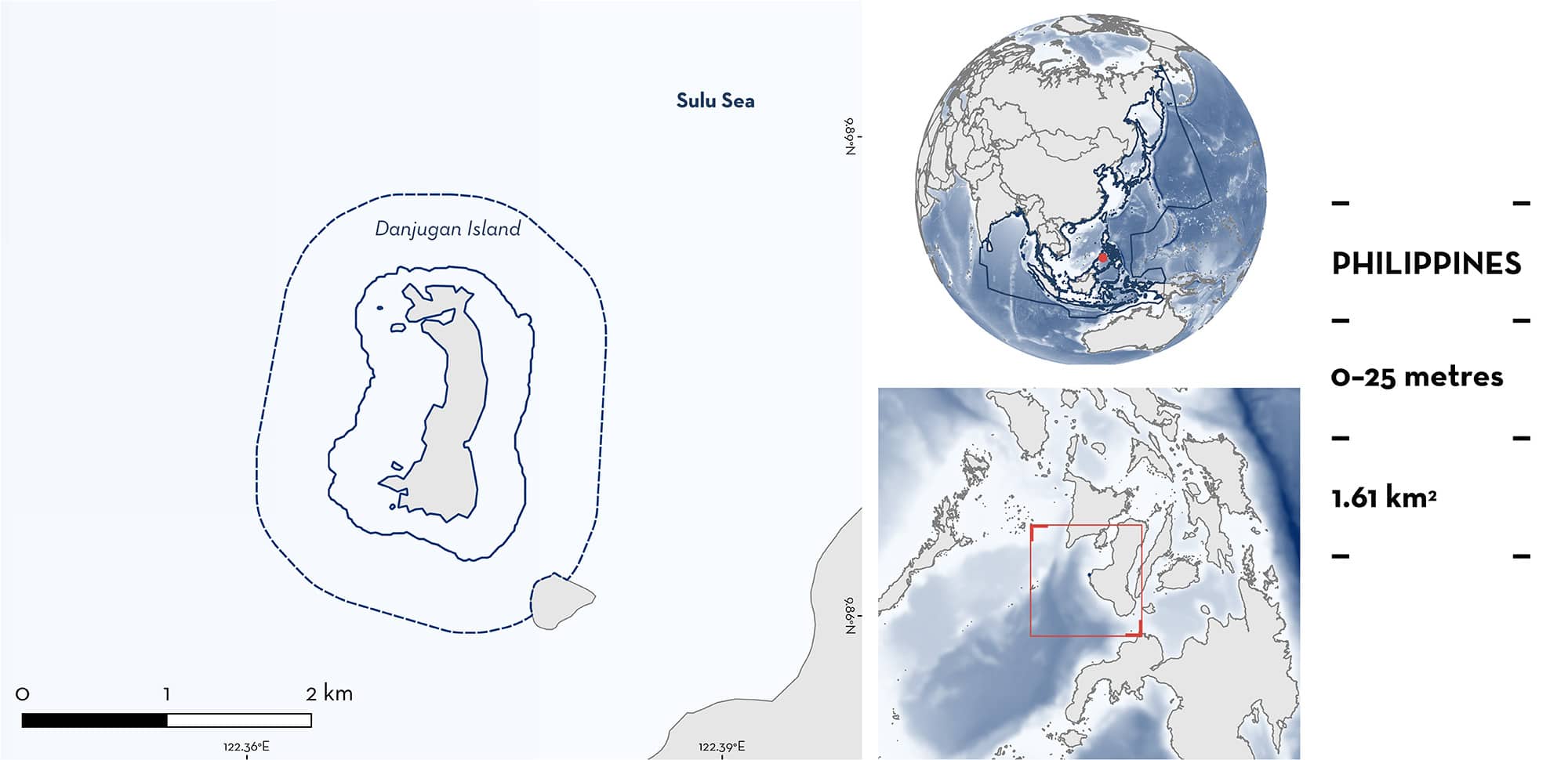ISRA FACTSHEETS
ISRA FACTSHEETS
ASIA REGION
Danjugan Island
Summary
Danjugan Island is located ~2.4 km off southwestern Negros Island in the central Philippines. This area surrounds a small island (~0.43 km2) located in the eastern Sulu Sea. The area is very shallow and is characterised by mangrove forests, sandy beaches, seagrass beds, and coral reefs. Within this area there are: threatened species and reproductive areas (Blacktip Reef Shark Carcharhinus melanopterus).
Download factsheet
Danjugan Island
DESCRIPTION OF HABITAT
Danjugan Island is located ~2.4 km off southwestern Negros Island in the central Philippines. This area surrounds a small island (~0.43 km2) located in the eastern Sulu Sea. The area is very shallow (25 m deep) and is characterised by mangrove forests, sandy beaches, seagrass beds, and coral reefs.
The Sulu Sea has a tropical monsoonal climate with only two seasons each year: the dry (boreal winter) season that prevails from November to April, and the rainy (summer) season, extending from May to October (Wang et al. 2006). The surface wind of the Sulu Sea is strongly influenced by the East Asian Monsoon System: northeasterly in winter, southwesterly in summer, and highly variable during the transitional periods (Wyrtki 1961). Vertical upwelling of cold, nutrient-rich waters is caused by the northeasterly winds (winter season) increasing marine productivity (i.e., phytoplankton blooms) (Wang et al. 2006).
This Important Shark and Ray Area is benthopelagic and is delineated from inshore and surface waters (0 m) to 25 m based on the depth range of Qualifying Species in the area.
CRITERION A
VULNERABILITY
One Qualifying Species within the area is considered threatened with extinction according to the IUCN Red List of Threatened Species. The Blacktip Reef Shark is assessed as Vulnerable (Simpfendorfer et al. 2020).
CRITERION C
SUB-CRITERION C1 – REPRODUCTIVE AREAS
Danjugan Island is an important reproductive area for one shark species.
Juvenile and adult Blacktip Reef Sharks are observed year-around within the area (K Ledesma Trebol pers. obs. 2024). Records of neonates (visually estimated to be ~40 cm total length [TL]) in this area date back to 1991 with the largest aggregation recorded in 2010, when sharks started to be monitored, with 60–80 neonate Blacktip Reef Sharks. Since then, groups of 12 to 20 have been regularly seen in this area year-around with a peak between July and September, when they have been seen daily (K Ledesma Trebol pers. obs. 2024). Size-at-birth for this species is 30–52 cm TL (Ebert et al. 2021).
The home range of neonatal Blacktip Reef Sharks was determined in three areas in which sharks had body sizes similar to Danjugan Island: Moorea, French Polynesia (mean = 62.5 cm TL; Bouyoucos et al. 2020), Orpheus Island, Australia (mean = 68.3 cm TL; George et al. 2019), and Ningaloo Reef, Australia (mean = 63.9 cm TL; Oh et al. 2017). In these studies, neonates remained in very shallow areas with coral cover, sandflats, and/or mangroves. They avoided deeper lagoonal and slope habitats and deep channels (Bouyoucos et al. 2020). In Puerco Island (Philippines) neonate Blacktip Reef Sharks are recorded at a distance of 0–50 m from the shoreline (Utzurrum 2022). These findings ae consistent with the observations from Danjugan Island and provide support for the importance of the local habitat for neonate Blacktip Reef Sharks.
Download factsheet
SUBMIT A REQUEST
ISRA SPATIAL LAYER REQUEST
To make a request to download the ISRA Layer in either a GIS compatible Shapefile (.shp) or Google Earth compatible Keyhole Markup Language Zipped file (.kmz) please complete the following form. We will review your request and send the download details to you. We will endeavor to send you the requested files as soon as we can. However, please note that this is not an automated process, and before requests are responded to, they undergo internal review and authorization. As such, requests normally take 5–10 working days to process.
Should you have questions about the data or process, please do not hesitate to contact us.


